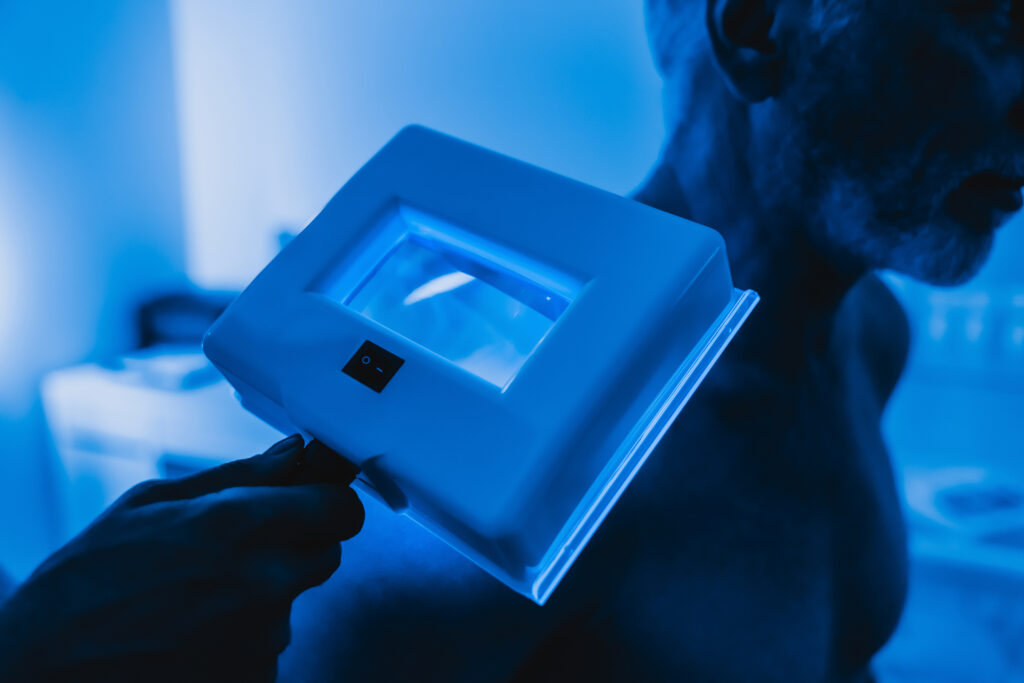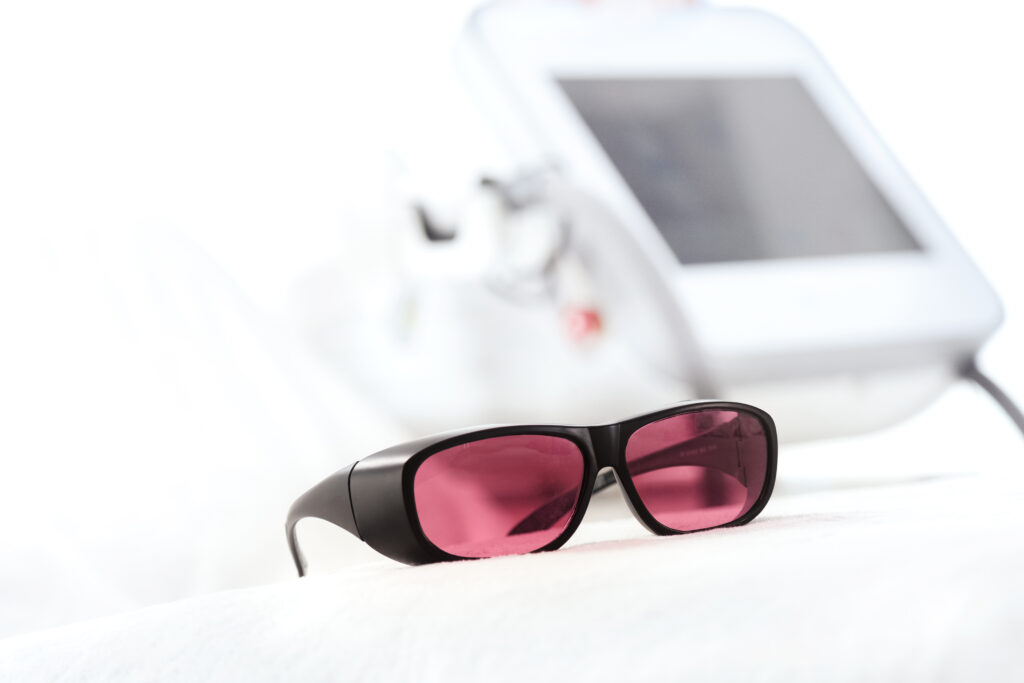Types of Cold Laser Therapy Devices

In the setting of today’s advanced medicine, there are therapeutic lasers that may be used for cold laser therapy without creating cutting or surgical incisions. For those who need some relief from the pain – be it their own or their pet’s- these devices are non-invasive and quite efficient.
It promotes the repair of the cellular structure, decreases inflammation, and alleviates pain all without damaging the skin or features around it.
Advantages of cold laser therapy devices
These devices are versatile, and used in both human and veterinary medicine to treat a range of conditions:
For Humans: They help in conditions such as tendonitis, arthritis, and muscle strains for instance. They also can treat skin disorders and aid in the healing of ulcers.
For Pets: Cold laser therapy devices are useful in treating canine injuries, arthritis and joint pains.
Types of Cold Laser Therapy Devices
1. Tabletop Devices
Full-body cold laser therapy devices are portable and also economically positioned which fall in between the professional models and the portable ones. These devices are used in stable positions during treatments; they can be moved easily from one place to another, making them suitable for clinical and home applications.
1. Versatility and Stability
These devices are portable and distinguish themselves by high stability during the treatment session. These are applied mainly in clinics, chiropractic offices, and physical therapy because they require a stable working platform for the laser.
Sturdy Construction: These devices are designed to be immovable during treatments because the lasers should be applied only to targeted zones.
Ease of Use: It also features controls that are easy to use on the handle and individual settings for therapy procedures.
2. Enhanced Treatment Capabilities
The tabletop cold laser therapy devices, are generally more powerful and have more functions than the handheld cold laser therapy devices. This makes it possible to apply concentrated and extensive therapies in the affected zones.
Power Output: Increased energy density delivers energy deeper into the tissues and that is why it is used where more intense therapy is needed.
Multiple Treatment Modes: It’s possible that they have pulse settings or variable wavelengths for enhanced outcome disparities as dictated by the patient’s conditions.
3. Clinical and Home Use
They are used in professional practices by health practitioners to administer treatment and also for home use where patients who need to self-administer therapy and treatments can use them.
Professional Settings: Prescribed by clinics for patients with chronic pain, joint/muscle injuries, and those who have undergone surgeries or operations.
Home Therapy: Serves as an additional opportunity for people with chronic pain, rehabilitation, injuries, and more to have actively controlled pain with time combined with special therapies without constant visits to clinics.
4. Selection of a proper Tabletop Device
While choosing the tabletop cold laser therapy device one has to take into account the power of the device, its readiness to work with different treatment areas, its operational simplicity, and safety enchantments. These devices are efficient in treating diabetic foot ulcers and give a good compromise between professional use and home use; an investment to better the quality of life and heal.
2. Portable Devices
Small handheld cold laser therapy devices are mobile and can be taken anywhere and used to administer the therapy at home, in clinical practice, or on a trip. The devices being portable, are developed to be easily carried and held, suitable for individual usage and urgent health care services.
1. Ease of Mobility
The portable cold laser therapy device is said to be small and lightweight meaning that you can move them from one place to another.
Compact Size: It should be noted that such devices are portable and often come in the size of a travel bag or a healthcare provider’s kit so that treatment accessibility does not affect the quality of therapy.
Lightweight Construction: Sturdily made for easy handling hence comfortable to use especially during treatments that may take a long time.
2. Versatility in Application
These are devices which although portable, hold considerable proficiency to support several treatment programs and therapeutic uses.
Adjustable Settings: Some of the transportable models are adjustable where one can control the power, duration and frequency of the pulse depending on the requirements of a patient.
3. Home Treatment Convenience
They are widely preferred for home care since they offer individuals the possibility to monitor their diseases without going through multiple hospital tours.
Personalized Therapy: Helps individuals to decide to carry out self-administered treatments effectively and in comfortable conditions, which are familiar to them.
Family and Pet Use: Perfect for a family house since it can treat family members as well as pets like dogs which may benefit from cold laser therapy on their injuries and or pains.
4. Considerations for Purchase
In the process of choosing an optimal portable cold laser therapy device, one should take into account the capacity, rechargeable option, Ease of operation and correspondence with the treatment requirements.
Battery Performance: Select models that have batteries with a very long life or models that utilize rechargeable batteries for convenience in case of long treatments.
User Interface: When it comes to accessibility features, consider a set of control mechanisms and indications that would be easily understandable for the potential buyer who is not an IT professional.
User Interface: Ensure the control and display interfaces employed in the control processes are user-friendly; they should not require the patient to be a professional in handling the equipment.
Safety Features: Confirm devices fulfil safety requirements and have off-setting measures against improper use or inadvertently generation of laser light.
The convenience of cold laser therapy devices is therefore highly commendable as they can be taken around to enable clients to incorporate treatments into their everyday schedule.

3. Stationary Clinic Models
Professional cold laser therapy models are static hence intended for clinical use in clinics and physical therapy treatment centers. These devices are very durable and have more power and flexibility to be useful in multiple types of therapeutic uses.
- Enhanced Power and Performance
Standalone clinic models of cold laser therapy devices are characterized by their substantially higher output power and innovative functionalities, which help improve the treatment outcomes for the patients.
- High Power Output: These devices provide choice laser energy in greater density, which indicates enhanced absorption in body tissues with a resultant increased treatment of musculoskeletal diseases.
- Therapeutic Versatility: Developed for application in conditions that involve acute and chronic pain, inflammation, tissue rebuilding, postoperative healing and other diseases and injuries.
- Professional Grade Design
Meant for regular and heavy use in clinics, industrial models are designed to be robust, free from failure and easy to operate for the end-users who are predominantly clinicians.
- Sturdy Construction: Sturdy construction guarantees stability and durability, thus providing the necessary level of the product’s functionality in the everyday work of the clinic.
- Advanced Features: Comprises the features that allow control of the power of the laser, program, or mode of treatment and the programmable aspect for customized sessions for the clients.
- Clinical Integration
The clinic models are designed to fit into any health-enhancing practices and with proper supervision, patients get professional cold laser therapies all in one place.
- Clinical Supervision: Provides accurate administration of prescribed treatments by skilled personnel in the provision of care with minimal risks and adverse effects on the patient’s care.
- Multi-Patient Capability: Ideal for treating several patients within a short period thus improving the throughput of clinics.
- Application in Veterinary Care
In clinics for animals primarily dogs, fixed cold lasers have become a must-have tool when it comes to the treatment and healing of animals.
- Animal Comfort: Beautifully constructed to allow for various sizes and personalities of the animals making it easy for treatment to be conducted in a stress-free way.
- Effective Results: Benefits the therapy and recovery process of animals, which in turn increases their quality of life by allowing them to move about much more easily.
- Considerations for Clinical Use
When choosing stationary clinic models some important characteristics such as the opportunity to apply various treatments, manageability and needed certification, as well as the integration with the existing clinical processes.
Treatment Protocols: Medical devices must have pre-set programs for known diseases which should facilitate easy, efficient, and standardized management of the diseases.
Safety Standards: This provides the required safety standards for the patients and the workers during laser therapy services as per the regulatory authority’s guidelines.
Integration Capability: Easy installation of systems and easy integration into clinics and clinics’ daily practice to promote patient care.
4. High-Power Laser Therapy Devices
Cold laser therapy is considered conventional, and high-power laser therapy devices can be categorized as the modernized form of cold laser therapy with better treatment potential and application in the clinic.
- Strengthened Treatment Extent as well as Capacity
When compared with LLLT, HPLT devices deliver the energy densities and penetrate deeper and therefore can be used to treat severe ailments and extensive parts of the body.
- Deeper Penetration: Capable of penetrating the deeper layer of tissues as such cellular structures as muscles, tendons and joints to give maximal therapeutic impacts.
- Increased Power Output: Produces higher energy that helps in speeding up the rate of healing and fighting inflammation better.
- Clinical Applications
Low-power therapeutic lasers are used in many fields of both human and animal medicine, where potent methods of treatment for acute and chronic conditions are needed.
- Orthopaedic Conditions: Suitable in cases of osteoarthritis, tendonitis, and other muscular/skeletal injuries as it regulates healing and decreases inflammation.
- Sports Medicine: Applied by athletes and sports medicine practitioners to reduce the time for healing of sports injuries, and to boost performance.
- Device Features and Design
- Multifunctional Capabilities: Flexible variables make it possible to individualize the existing treatment models according to the clientele and state of health.
- User-Friendly Interfaces: Some controls boast of being programmable to ease the complexity of the usage when the healthcare professionals are administering the treatment.
- Considerations for Clinical Use
While examining the application of high-power laser therapy devices, the clinician has to follow some parameters such as safety measures, guidelines to follow, and the patient being treated.
- Safety Measures: Safety measures are installed in the devices to avoid cases where patients have their skin burned by these lasers as well as for patient comfort during treatment.
- Treatment Planning: Individualized treatment planning is practised for different patient conditions and potential therapeutic goals.
Cold laser therapy can be classified as curing with high-power laser therapy devices which is a sophisticated therapeutic technique that provides significant therapeutic value for both human and veterinary applications.
Choosing the Right Device
Selecting the best cold laser therapy device depends on several factors:
- Power Levels: They vary in terms of power that they can deliver and that in turn determines the depth, invasive and efficiency of the treatment.
- Wavelengths: Target tissues are reached by various wavelengths allowing for specific treatments.
- Portability: Certain machines are made to be used in homes, and others are made to work in clinics.
- Intended Use: There is a variety depending on whether it’ll be used on human or animal patients.
Whether the idea of how to improve one’s health or finding lasting relief for a beloved pet interests one, the world of cold laser therapy devices offers real, non-invasive options for healing.
Ready to discover more? Why don’t we take a closer look at our article Choosing the Best Cold Laser Therapy Device for Dogs] the world of cold laser therapy devices, in detail?
Before starting with your search for cold laser therapy devices, it is advisable to consult health professionals to identify the right devices that will help you achieve your intended healthy lifestyle. For those looking for treatment for themselves or their pets, these devices hold the potential for many of the benefits which can be ascertained from scientific data and innovations in therapeutic tools.
